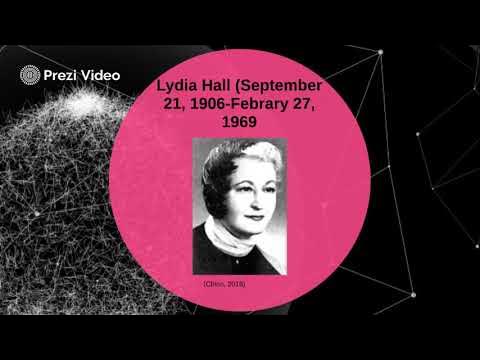Primary Care in the North: Meeting the Challenge
Summary
TLDRThe video script discusses the transformation of primary care in a Canadian province, emphasizing a shift from illness care to health care. It features Norwest Community Health Centers, which offer a comprehensive range of services under one roof, including mobile health services for remote areas. The script highlights the challenges of providing care in a vast region with an aging population and limited resources, focusing on innovative solutions like mobile units to reach seniors and maintain them in their homes. It underscores the importance of a population-based approach, interdisciplinary collaboration, and the need for innovative thinking to address healthcare disparities.
Takeaways
- 🏥 Traditional primary care is evolving, with a shift from 'illness care' to 'health care' to address the high costs of the former.
- 🌐 Norwest Community Health Centers is part of a network providing comprehensive care with a team including physicians, nurse practitioners, nurses, and other specialists.
- 👴 They primarily serve priority populations such as seniors and families, especially those with difficulty accessing primary care.
- 🚑 Mobile health services are crucial for reaching remote communities, with specialized units for primary care and diabetes services.
- 🌆 Geographic challenges are significant, with a large area to cover and a sparse population, necessitating innovative care delivery methods.
- 👣 The model aims to keep people, especially seniors, at home, reducing the need for travel and hospital visits, which can be a full-day affair.
- 👣 Foot care is highlighted as an essential service that helps maintain mobility and independence for seniors.
- 📊 Data and evidence are important, but the human element and context are crucial for providing tailored services to communities.
- 💡 Innovation is key, with the need to balance evidence-based decision-making with entrepreneurial thinking to meet community needs.
- 🏡 The approach focuses on the right care at the right time in the right place, emphasizing health promotion and preventive care over institutional care.
Q & A
What is the primary focus of traditional primary care in the province mentioned in the script?
-Traditional primary care in the province has primarily focused on illness care rather than health care.
What is the significance of Norwest Community Health Centers in the province?
-Norwest Community Health Centers are part of a network of community health centers that provide comprehensive care with various health professionals under one roof, serving priority populations including seniors and families with difficulty accessing primary care.
How does the geography of the province impact the delivery of primary care?
-The province's vast geography, comparable to the size of France, poses a challenge for delivering primary care to its sparsely populated areas, particularly to an aging senior population.
What are the two types of mobile health services mentioned in the script?
-The two types of mobile health services mentioned are primary care and specialized diabetes services.
Why are mobile units used in the region?
-Mobile units are used because it doesn't make financial sense to allocate substantial resources to small communities with populations as low as 500 people.
What is the role of the foot care nurse in the community health services?
-The foot care nurse plays a crucial role in keeping people mobile by providing foot care services, which are especially important for individuals with arthritis or limited visibility who cannot manage foot care on their own.
How does the mobile health service adapt to different environments to provide care?
-The mobile health service can adapt to various environments, such as setting up behind a curtain in a library, to provide care, emphasizing the importance of service delivery and relationship with the people over the location.
What is the main challenge faced by seniors in small communities according to the script?
-The main challenge faced by seniors in small communities is the lack of resources and support, leading to isolation and difficulty accessing necessary care.
Why is it cost-effective to use mobile units for providing services to remote communities?
-Using mobile units is cost-effective because it allows for the provision of services to multiple remote communities at a fraction of the cost of building and maintaining individual facilities in each community.
What is the approach to decision-making in providing care to the population in the north?
-The approach to decision-making involves a balance between evidence-based practices and innovative thinking, considering the unique challenges and needs of the population, and sometimes making decisions without complete data.
What is the philosophy behind the model of care provided by Norwest Community Health Centers?
-The philosophy is to provide the right care by the right person, at the right place, and at the right time, focusing on health promotion and keeping people in their homes to reduce healthcare costs.
Outlines

This section is available to paid users only. Please upgrade to access this part.
Upgrade NowMindmap

This section is available to paid users only. Please upgrade to access this part.
Upgrade NowKeywords

This section is available to paid users only. Please upgrade to access this part.
Upgrade NowHighlights

This section is available to paid users only. Please upgrade to access this part.
Upgrade NowTranscripts

This section is available to paid users only. Please upgrade to access this part.
Upgrade Now5.0 / 5 (0 votes)





